Spicy Sichuan Hot Pot is made with a delicious Chinese spicy broth that simmers away while your guests can cook their own thin slices of meats, seafood, vegetables, noodles or anything they desire. Fun interactive communal dinner idea! (Mild broth recipe included for those that do not like it spicy.)
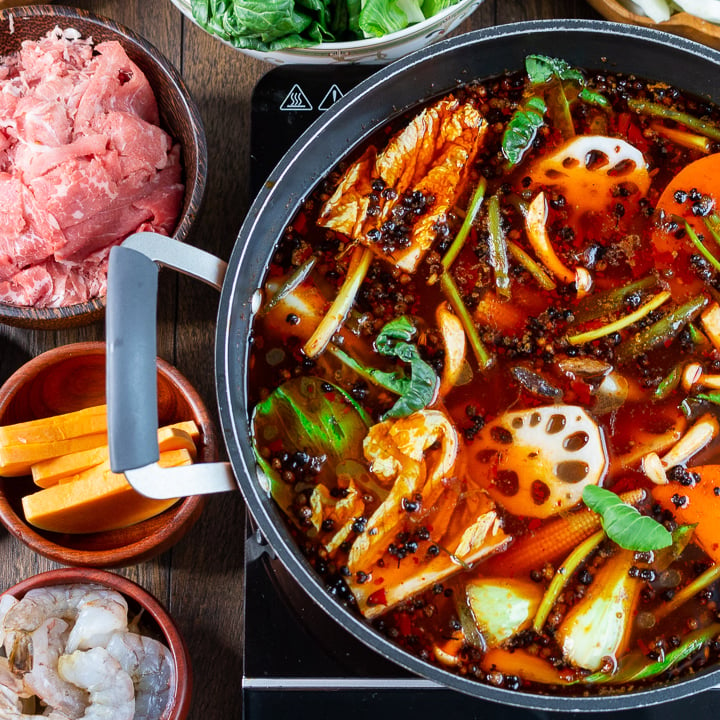
Hot Pot is sometimes also referred to as hotpot, steamboat, Chinese hot pot, huo guo and many other ways. It’s a delicious pot of bubbling broth on a cooking device in the middle of the table in which family and friends can cook thin slices of meat, fish, tofu, mushrooms, vegetables, Homemade Chinese Dumplings (Jiaozi 饺子), Noodles, fish balls or any hot pot menu items you want to use up in your crisper or pantry. Today, we are going to share with you everything you need to know about hot pot essentials and throwing a fun Chinese New Year gathering.
Table of Contents
- What is Hot Pot?
- Spicy or Mild
- Spicy Sichuan Hot Pot: The Tongue Numbing Experience
- Mild Hot Pot Broth
- Is Hot Pot Healthy?
- Nourishing Soup
- History of the Spicy Sichuan Hot Pot
- Types of Hot Pot in Different Countries
- Communal Feast
- Tools and Equipment Needed to Prepare Hotpot
- Favorite Ingredients to Cook in the Hot Pot
- How to host a hot pot buffet gathering?
- Best Cooking Hacks
- Hot Pot Etiquette and Safety
- Dipping Sauces and Condiments
What is Hot Pot?
In China hot-pot is called Huǒ Guō 火锅, which literally translates to “Fire Pot”. It is sometimes also referred to as Chinese Fondue or Steamboat.
A hot-pot meal features a pot on a portable burner that is used to simmer seasoned broth in the center of the table. Raw vegetables, sliced meats, seafood and noodles are prepared and set around the pot.
Each of the dinner guests are required to be their own cook. Meats and vegetables are placed individually into the hot broth by using chopstick until the desired doneness. The cooked foods are then placed into their own bowl and guests can dip them in the prepared sauce before eating. Simply delicious! Watching the bubbling pot of items cooking in front of you is calming and mesmerizing.
Spicy or Mild
Hot pot is a heart healthy meal as it consists mainly of vegetables, lean meats and fish. This week it has been very damp and cool in Hong Kong and I wanted something to heat our family up from the inside out. There are so many potential flavorings that can be added to the broth, but we decided on making two different kinds. We made both a mild chicken and Chinese herb broth and also a “numb and spicy,” (“ma la,” 麻辣) broth to make everyone in our family happy.
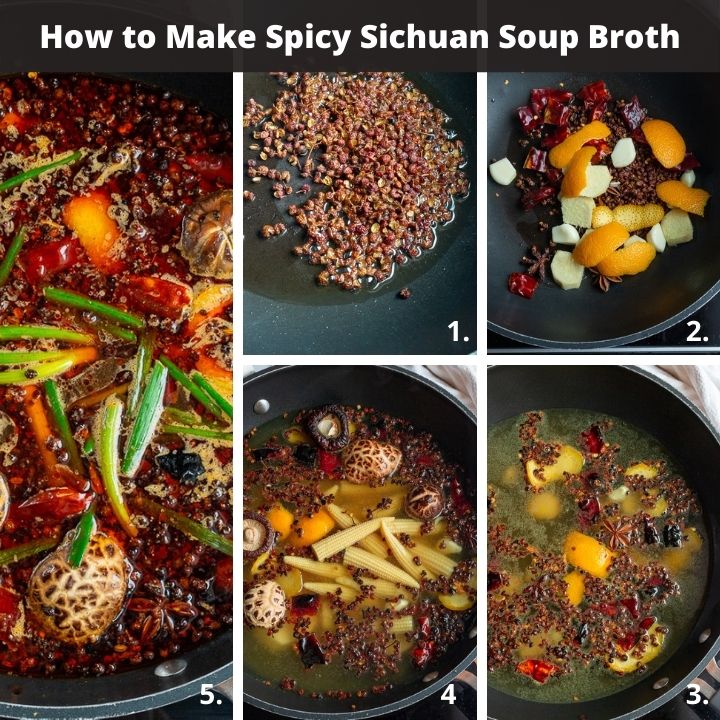
Spicy Sichuan Hot Pot: The Tongue Numbing Experience
So why is my tongue numb?According to Sugai et al, Sichuan peppercorns have this molecule called hydroxy-alpha-sanshool that causes this numb and tingly feeling on your tongue and lips. The dried chili peppers in our hot pot soup broth have capsicum that causes a hot and burning sensation on your lips and tongue.
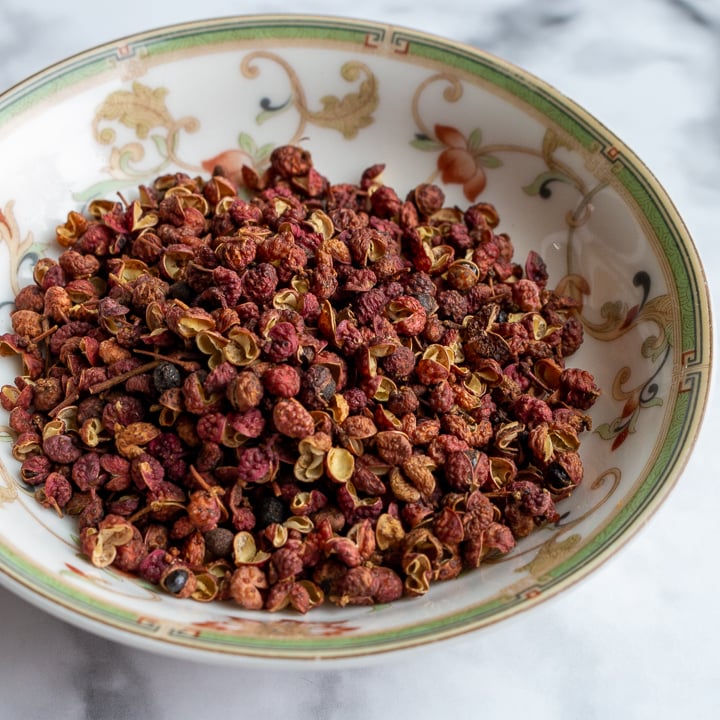
In addition to the spicy additions like Sichuan peppercorns, dried Sichuan chili peppers, chili bean sauce and chili oil, there are many delicious aromatics in the hot pot broth for a clean out your sinus’s kind of enjoyment. (smiling) Star Anise, ginger, orange zest, dried mushrooms, spring onions are added to a delicious homemade chicken broth with a splash of soy sauce.
The heat level is quite spicy and not for the faint of heart. You can adjust the amount of chilis to make it as mild or as spicy as you desire. If you are a chili head, you are going to love our Homemade Sichuan Garlic Chili Oil and our Sichuan Pepper Beef recipe.
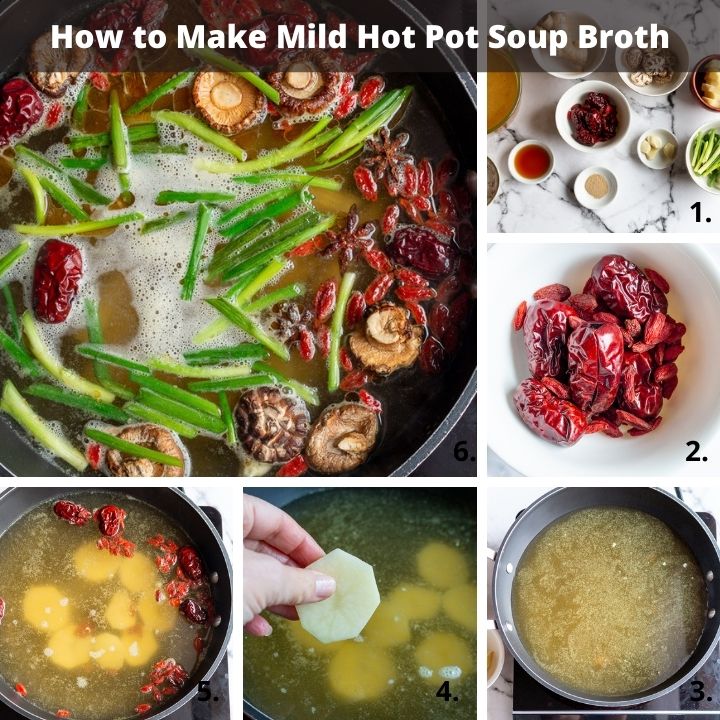
Mild Hot Pot Broth
If you prefer to skip the spicy chili peppers, we have made a delicious mild light and nourishing hot pot broth that you are going to love. Personally speaking, the mild is more my style, but the boys love it spicy.
We start the broth out with chicken broth. Then, we add daikon radish, goji berries, Chinese red dates, bashed whole garlic, star anise, sesame oil, spring onions, salt, white pepper and a dash of soy sauce to taste. Sometimes, we add in a few corns on the cob too. Corn on the cob adds a natural sweetness to this mild broth, especially if you do not have access to Chinese red dates and goji berries. Be sure to check out our recipe for Goji Berries and Red Dates Herbal Tea. We used the same products in our soup base.
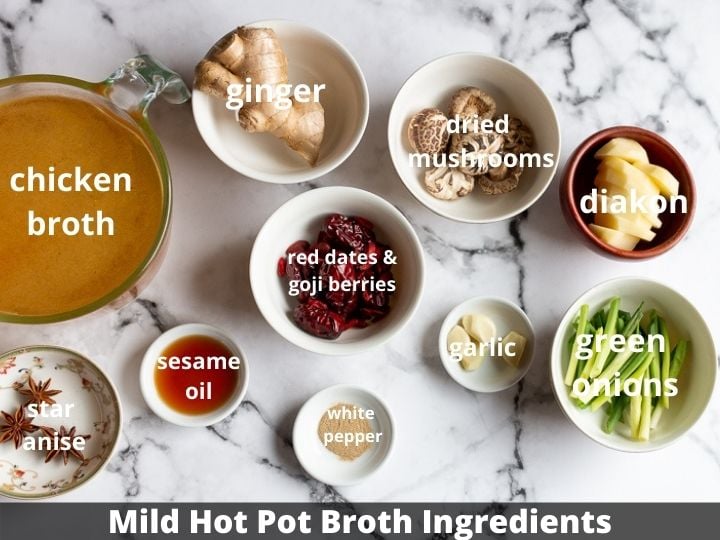
Is Hot Pot Healthy?
Our homemade soup broths for hotpot are very healthy. Both soup bases are made with low sodium homemade chicken broth, all-natural ingredients, spices, herbs and aromatics. Unlike store bought hot pot broth that are filled with Monosodium Gluconate (MSG) and tons of sodium, ours is homemade, all natural, lower in sodium and does not contain any sugar.
Hot pot is a low carb and low-fat menu choice. You can make it vegan or vegetarian by switching to a vegetable, mushroom or even tomato soup broth as your base.
Nourishing Soup
When you drink a little of the warm broth with your cooked ingredients, it makes you feel fuller. It’s just what your body is craving. The soup broth that you cook your ingredients in is very warming and nourishing. Did you know that your body prefers warm and lightly cooked foods that are easy to digest? If your body is already stressed and has to heat up its food to absorb the nutrients, it makes you even weaker. Take a minute to read our article Feed Your Spleen; Nourish Your Body to learn more about this topic and meal plans to support your spleen qi.
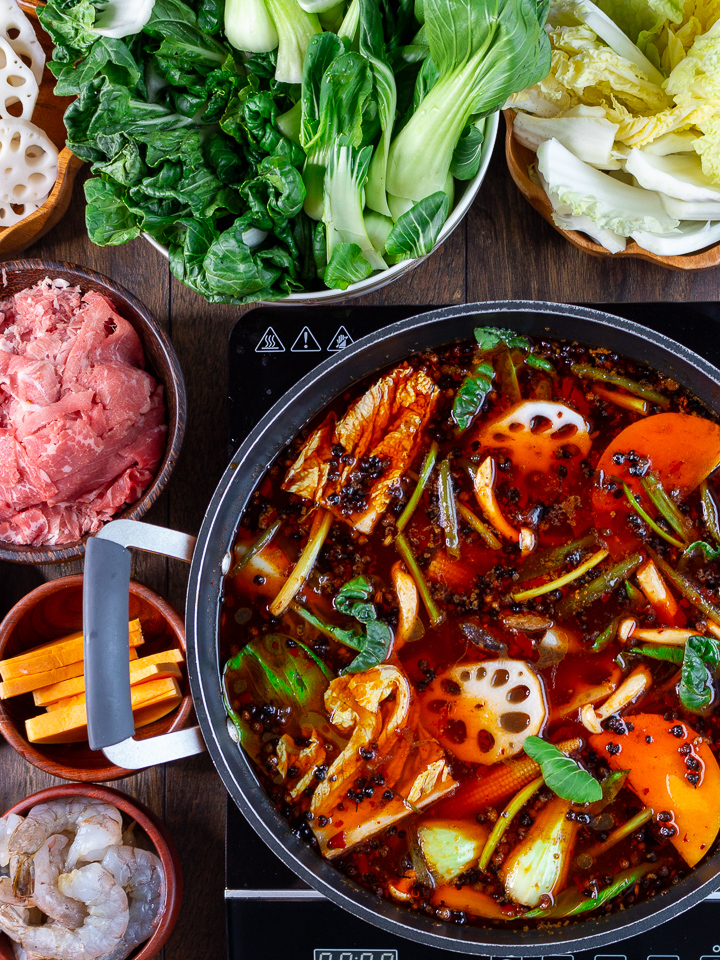
History of the Spicy Sichuan Hot Pot
It is said that Spicy Sichuan Hot Pot originated from Mongolia where the Mongol warriors used their helmets to cook food when they moved from one place to another. Ingenious!!! This cooking method spread throughout China and then on to other countries.
As the hot-pot dish spread to other parts of the country, it picked up local ingredients and embellishments. In the Southern part of China, seafood and vegetables are the main ingredients for hotpot. On the other hand, in the Northern parts of China, you may see more lamb and dumplings added to the hot pot. In the winter seasons, the people liked to eat food that instantly warms their bodies and lifts their spirits. That is exactly why you need to try this recipe for your family this season.
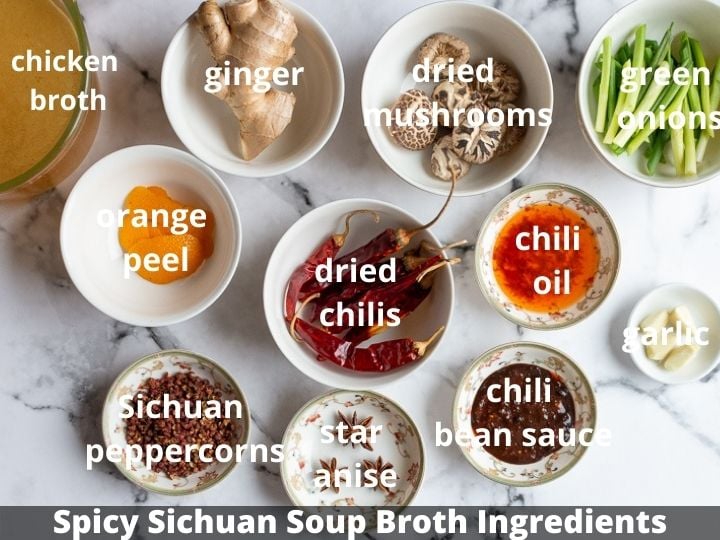
Types of Hot Pot in Different Countries
Many different cultures in Asia have a different type of hot-pot. What makes each and every hot pot a little different is the type of hot pot broth and the add ins.
There are many differences between Chinese hot pot vs Japanese Shabu Shabu. Do you know why the Japanese hotpot is called Shabu Shabu? It is because it makes that “swish swish” sound when you drag the thin pieces of meat and vegetables through the broth. Shabu Shabu has a soup base of kombu (dried kelp) and usually has both a sesame and/or ponzu dipping sauce. The Japanese shabu shabu broth is very mild. You need a dipping sauce to add a bit of flavor. On the other hand, Chinese Spicy Sichuan Hot Pot is super flavorful broth and dipping sauces are really optional.
Thailand has Suki hotpot. Simple Spicy Thai Hot Pot is flavorful soup broth with lots of local ingredients to dip and cook with a spicy dipping sauce. Malaysia and Singapore have a steamboat and Vietnam has a hotpot ẩu canh chua. These are just a few examples but there are many more types of hotpots from other countries and regions.
Communal Feast
All of these types of hot pots have different ingredients, dipping sauces, vegetables, fish, dumplings and meats that are cooked. However, the one common theme of all hot pots is that is a beautiful way for families and friends to sit around a steaming pot of yummy pot of goodness: cooking, chatting and enjoying their time together. This is a fun weekend meal for the family.
In addition, it is also very romantic to share your hot-pot with your significant other. You can cook for each other, feed each other. If you decide to enjoy a spicy broth, you can really heat up your night.
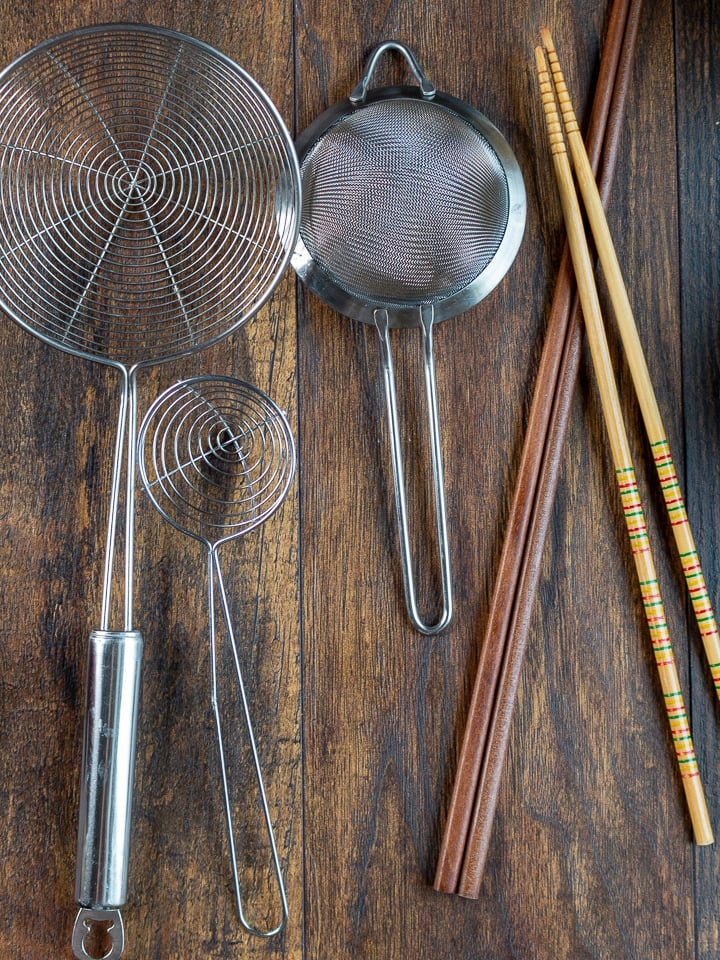
Tools and Equipment Needed to Prepare Hotpot
- Heating devices to cook your ingredients: There are many options to choose from.
- electric hot pots
- portable electric cooktop with a wok
- instant pot using the sauté function
- deep side electric frying pan.
The goal is to be able to cook at the table so everyone can cook their ingredients together. The cooking vessel needs to be deep enough to cook the ingredients in and have an adjustable heat level. We are currently using a portable electric cooktop with a deep wok. However, we used to have a dual sided electric hot pot with one side for spicy and one side for the mild broth (辣的 Là de & 不辣的 Bù là de). We loved this very much and want to get another one soon.
2. Chop sticks or a tool like tongs to add the ingredients into the pot. We use separate cooking chopsticks for each type of ingredient to avoid cross contamination between the meats, fish and vegetables, etc. (DO NOT USE YOUR EATING CHOPSTICKS TO COOK WITH!) (okay, the nurse is now stepping down from the soap box)
3. Metal strainers to scoop out all the cooked items. We also like to use a metal noodle basket to cook our noodles, so they don’t get lost in the pot.
4. Ladles to serve a little of the broth.
5. Setting the Table: Each place setting should have eating chopsticks, soup spoons, little bowls for dipping sauces and small bowls for eating. In addition, lots of napkins, especially if you are not proficient in your chopstick skills.
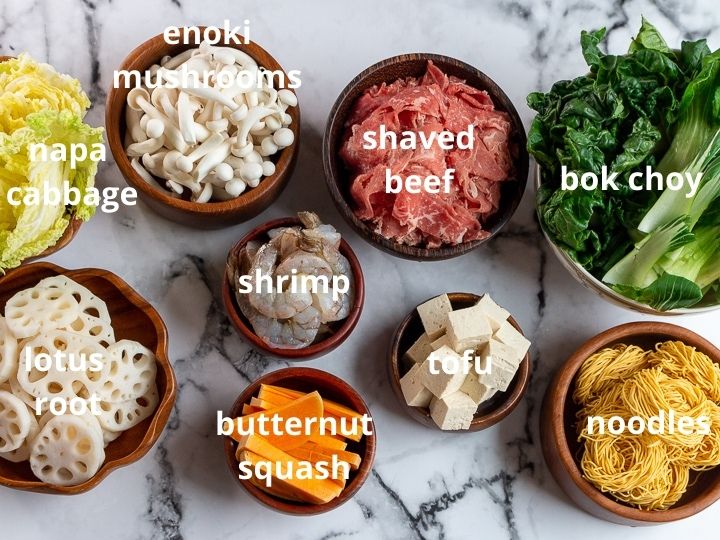
Favorite Ingredients to Cook in the Hot Pot
Ingredients that are cooked in the broth are dependent on where you live. For example, In Northern China, lamb is a common ingredient as it is cooler there. Lamb is a warming meat. You can learn more about this concept in our article Introducing the Five Energies of Food. In southern China, you will see more seafood. Fresh fish and seafood are more plentiful in the Canton Region.
There are literally no boundaries to the edible items you may wish to prepare to cook for hot pot. The only hard fast rule is to make sure that all of your proteins like beef, pork, chicken, fish and lamb are sliced super thin so that they cook quickly. If you want harder vegetables like carrots or squash make sure that you cut them thin, so they cook quicker. Here is a quick overview of some of our favorite items…
Vegetables:
Green leafy vegetables like baby bok choy, napa cabbage, gai lan (Chinese broccoli) spinach and sweet potato leaves are delicious and quick to cook. Snow peas, bamboo shoots, bean sprouts, baby corns, tomatoes lotus root and even romaine lettuce are delicious in the soup broth. Really romaine lettuce?! It is really good, give it a go. Make sure you try our recipe for Stir Fried Romaine Lettuce. If you choose to add harder vegetables like carrots, squash, sweet potatoes and daikon, be sure to cut them thinly and add them to the pot first as they take the longest to cook.
Mushrooms:
Shiitake, button, enoki, oyster, shimeiji are all delicious in hot pot. You can also use larger mushrooms, but it is best to slice them first, so they cook quicker. We used dried mushrooms for our recipe too. Be sure to check out our post for How to Prepare Wood Ear Mushrooms for a delicious addition to homemade hot pot.
Meats and Poultry:
Ultra-thin slices of ribeye or sirloin beef, pork, lamb, chicken is delicious. If you are cutting your own proteins, we suggest you freeze them slightly so you can cut them super thin. Be sure to cut your proteins against the grain. Otherwise, you can ask your butcher to chip your beef, lamb or pork into thin slices. We have found thin shaved beef in groceries stores that we used in our Sukiyaki Beef Udon recipe. You can find pre-sliced sukiyaki beef and pork in Asian markets.
Tofu:
Firm tofu cubes are delicious. However, we also love fried tofu and tofu skins.
Fish and Seafood:
Thin sliced white fish, fish balls, shrimp, clams, scallops, mussels and abalone are all fabulous in a steamy pot of deliciousness.
Noodles and Dumplings:
Thin egg noodles, mung bean noodles or glass noodles, ramen, rice noodles or any noodles you desire are a fun addition. A delicious addition to our spicy Sichuan Hot Pot is our boiled Homemade Chinese Dumplings (Jiaozi 饺子). Remember to always cook the noodles last as they absorb a lot of the soup broth.
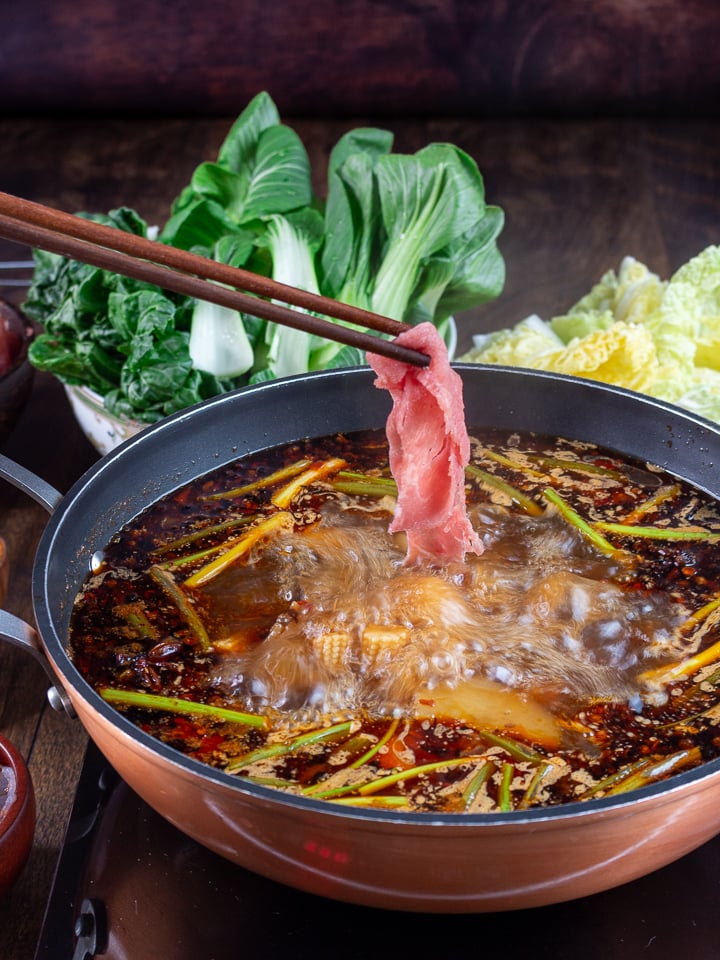
How to host a hot pot buffet gathering?
Enjoying a meal with family or friends is fun but take it to the next level with an interactive hot pot buffet feast. It is always fun cooking together to enjoy a communal feast or Chinese New Year celebration.
- Make your Spicy Sichuan Hot Pot Broth and/or mild soup broth and keep warm in electric hot pot cooker, portable electric cooktop with pot, instant pot or deep electric frying pan. (Reserving a little extra chicken broth for later as the liquid volume reduces during the cooking process)
- Slice meats and fish. Prepare vegetables, tofu, dumplings, noodles, mushrooms, etc. and place on serving plates on your table.
- Gather up cooking chop sticks, tongs, strainers to cook your ingredients.
- Make the hot pot dipping sauce and place in individual little containers for each person.
- Set the table with a small bowl, napkins, eating chopsticks and soup spoon for each guest.
- Gather up your guests to sit around the table.
- Designate one person as the guide and main chef to the cooking process.
- Increase the temperature of the cooking device up to a boiling level and adjust to a medium boil during the cooking process.
- Add your hard vegetables that take longer to cook first to the pot.
- Next allow your guests with cooking chopsticks or tongs to add ingredients to the pot that they wish to eat.
- If your soup broth level starts to evaporate during the cooking process, add a little extra chicken or vegetable broth to the hot pot cooker. Then, allow the broth to come back up to temperature before adding more ingredients to the pot.
- As the very last step, add the noodles in a little basket to prevent them from getting lost in the pot and cook until aldente. We cook noodles last as they soak up a lot of the soup broth.
- Enjoy the experience!
Best Cooking Hacks
If you have not made Spicy Sichuan Hot Pot before, check out these helpful hints for our cooking our hot pot recipe.
- Cook the hard vegetables like lotus root, squash, carrots, daikon, etc. first as they take longer to cook.
- If you are preparing your own thin sliced meats, place them in the freezer for about 45 minutes before slicing. Cut meats thin against the grain. Freezing your meat makes it easier to cut it super thin. Your goal is to have it thin as shaved beef or sukiyaki beef.
- Set aside extra chicken or vegetable broth to add to the pot mid-cooking. As you cook your ingredients, some of the soup broth will be absorbed and evaporated.
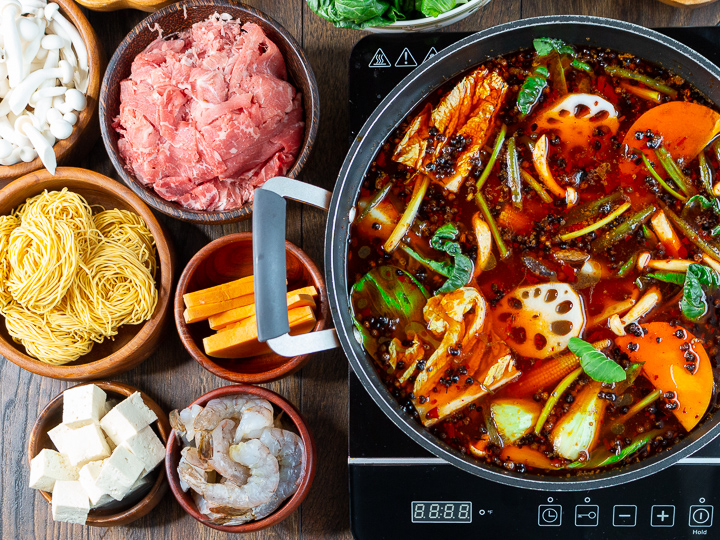
Hot Pot Etiquette and Safety
- Cooking chopsticks vs eating chop sticks. Do not dip the eating chop sticks in the pot and do not eat with the cooking chopsticks. We are very strict about this. (Be sure to take extra precautions to make sure the cooking instruments used, and all ingredients placed in the cooking pot or taken out of the cooking pot are with CLEAN COOKING INSTRUMENTS ONLY and NOT THE EATING CHOPSTICKS.) Okay, the nurse will now step down from her soap box.
- We have separate kitchen chopsticks and tools for meats, seafood, mushrooms, tofu and vegetables to prevent cross contamination. In addition, we place the raw items like meats on one plate separated from vegetables on another.
- Keep the Children Safe: If you have young children, you know they can be unpredictable. It’s always best to be on the safe side. We usually sit small children at a separate table right next to us but far away from the electric hot pot. We cook for them and put it in their bowl, so their hands are far away from the hot cooking vessel. However, we found that once children are a little older, compliant and can follow directions, they love watching the cooking process at the table. We still do the cooking for them. However, by the time they are 9 or 10, they can be cooking for you.
- Eat what you put in the pot and not what your friend put in the hot pot, if you want to stay friends. (smiling)
- No double dipping! After you cook your ingredients, remove them from the pot and place them on your plate, you are done. Do not put ingredients that have been on your personal plate back into the pot. Ewwww!
- Designate one personal chef in the group. During the times when we are more aware of cross contamination and illness, nominate one person to cook and scoop the hot pot ingredients on everyone’s plate. This may not be the full cooking experience, but it is certainly still mesmerizing watching the hot pot broth boiling away. This is the safest option. Another option is to make one delicious pot of our Chinese Beef Noodle Soup Recipe and serve it up.
- Use the scooper basket to add in your noodles so they don’t get lost in the pot. Do not cook noodles until the very end because they will absorb a lot of the liquid in the hot pot.
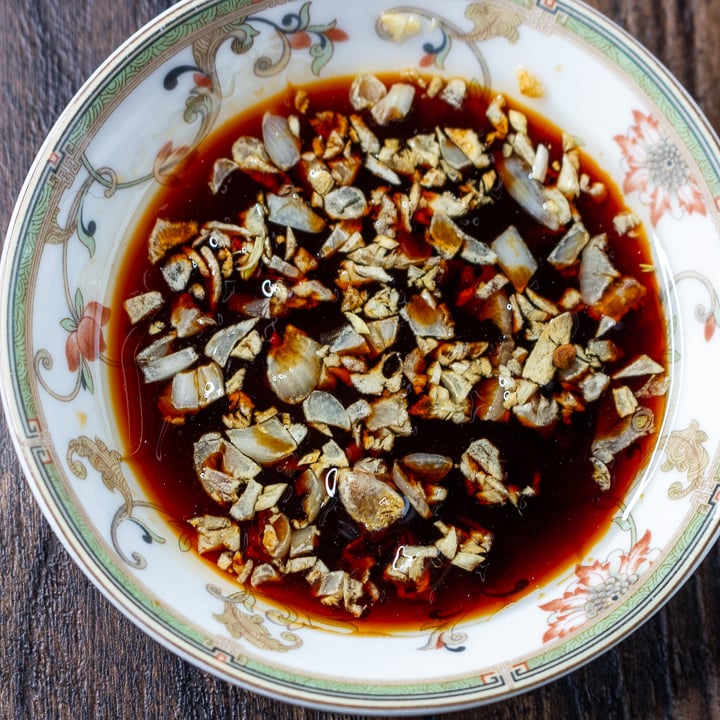
Dipping Sauces and Condiments
- Chopped bird chilies and soy sauce
- crushed chili, soy sauce, black Chinese vinegar and coriander
- sesame oil, scallions, garlic, chili oil and black Chinese vinegar
- oyster sauce, sesame oil, soy sauce, garlic, scallions
- Chopped garlic fried golden brown (place in small dish and serve on side as a condiment)
- Chinese picked vegetables (place in small dish and serve on side as small palate cleanser)
Add more chicken, vegetable or mushroom pot to the broth and allow it to come back up to temperature before adding your ingredients to cook.
Cook the items that take longest to cook such as hard vegetables like thin slices of diakon radish, carrots, squash, etc.
If the meat if cut super thin, it only needs a minute or less to cook in a boiling hot pot broth.
More Delicious Soups and Hot Pot Recipes
Five Spiced Beef Diakon Noodle Soup
Did You Like Our Recipe? Leave a ⭐⭐⭐⭐⭐ rating and/or a review in the comments section below. Your feedback is always appreciated! Follow us for more delicious recipes on Pinterest, Instagram, Twitter and Facebook! Don't forget to sign up for our email list for more free recipes.
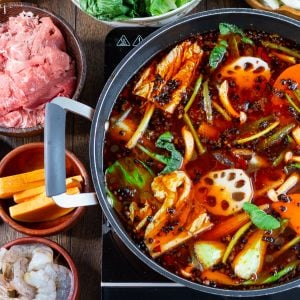
Spicy Sichuan Hot Pot [Mild Broth Recipe Included]
Equipment
- Electric hot pot, portable electric cooker and deep pot, instant pot or even a deep portable electric frying pan
- COOKING chopsticks or tongs
- Ladle
- Small metal strainers
- EATING chopsticks and spoons
Ingredients
Ingredient Ideas to cook in Hot Pot
- 1 diakon radish
peeled and cut into wedges - 8 oz baby corns or corn on the cobs husked and cut in half
- 8 oz mushrooms
we used enoki - optional - 2 cups baby bok choy
washed and prepped - optional - 2 cups green vegetables we used bok choy
- 2 cups napa cabbage
cut into cubes - optional - Lotus root optional
- Butternut squash optional
- ½ pound shrimp optional
- 12 oz beef
thin sliced - 6 oz tofu
firm cut into cubes - optional - fish balls optional
- fish thin slices (optional)
- 8 oz rice noodles we used dried shrimp noodles - optional
- Homemade Chinese Dumplings optional
Spicy Sichuan Broth (For those that like it really spicy)
- 1 tablespoon oil light flavored
- 2 tablespoon Sichuan peppercorns
or to taste - 8 Sichuan dried peppers chopped or to taste (can substitute with other mild dried chili peppers or fresh chopped chilis to taste)
- 3 whole star anise
- 2 inch ginger
knob peeled and sliced - ⅓ cup orange peel cut off orange peel off one orange (just the orange and not the yellow pith)
- 10-12 cups Chicken broth
- 5 dried mushrooms we used shiitake
- 1 diakon radish peeled and sliced
- 8 oz baby corns or corn on the cob cut in half
- 1 tablespoon chili bean sauce
- 2 tablespoon soy sauce or to taste
- 1 tablespoon garlic chili oil or to taste (optional)
- 4 green onions chopped
Mild Hot Pot Broth (Optional for those that do not like spicy foods)
- 10-12 cups chicken broth gluten free
- 1 diakon radish peeled and sliced thinly
- 6 Chinese red dates dried whole
- ⅓ cup goji berries
dried also known as wolf berries - 3 garlic peeled and bashed
- 1 inch ginger knob peeled and sliced
- 6 shiitake mushrooms dried
- 8 oz baby corns or corn on the cob husked and cut in half
- 3 star anise whole
- 2 tablespoon sesame oil
- 4 spring onions chopped
- salt and white pepper to taste
- 2 tablespoon soy sauce or to taste
Dipping Sauce Ideas
- Chopped bird chilies and soy sauce optional
- Chopped garlic fried golden brown optional
- Chinese picked vegetables serves as a palate cleanser - optional
- Crushed chili, soy sauce, black Chinese vinegar and coriander optional
- Sesame oil, scallions, garlic, chili oil and black Chinese vinegar optional
- Oyster sauce, sesame oil, soy sauce, garlic, scallions optional
Instructions
- Determine if your guests would like the hot and spicy or mild broth (I made one of each).
Spicy Sichuan Hot Pot Broth
- Turn your burner on medium high and add the oil. Then add Sichuan peppercorns, Sichuan dried peppers, whole star anise, ginger, and orange peel and stir fry until aromatic, about 1 minute.
- Add chicken broth, dried mushrooms, diakon radish, baby corns (or corn on the cob), chili bean sauce, soy sauce, garlic chili oil and green onions and allow to cook for about 20 minutes or until the diakon radish is tender. Turn down the temperature to a simmer until you are ready to eat. Skim your broth frequently.
Mild Hot Pot Broth
- Turn burner on Medium high. Add chicken broth, diakon radish, Chinese red dates, goji berries, garlic, ginger, dried mushrooms, baby corns or corn on the cob, star anise, sesame oil, spring onions, salt, white pepper and soy sauce to taste. Cook for about 20 minutes or until the daikon and corn are tender. Place heat to a simmer. Skim your broth frequently.
Prepare Ingredients to be Cooked
- Plate up all of your uncooked thinly slices meats, fish on to separate serving plates. Also plate up all of your raw vegetables and other items such as noodles to prepare for the guests to cook at the dining room table.
- Prepare your dipping sauces and condiments and place on dining room table.
- Transfer your Hot Pot Soup Base Spicy or mild version from your pot on the stove to your hot pot at the dining room table. (Be careful- very hot) Turn on your electric or gas hot-pot and return temperature up to a slight boil. (If you decide to make only one type of broth this whole procedure can be done at the dining room table on the electric or gas hot-pot)
- Make sure the hot-pot broth is boiling. With your cooking chopsticks, carefully start adding your firmer vegetables like squash, carrots or lotus root to the boiling hot pot broth, as these take longest to cook. Next go with either your meats or fish and dip into hot broth and swish back and forth until cooked. Then, start adding some green leafy vegetables. Each person will need to cook and grab from the hot-pot their finished cooked product with their cooking chopsticks or tongs NOT with your eating chopsticks.
- Provide small bowls for the cooked delights and enjoy dipping your cooked meats, fish and vegetables in the dipping sauces and condiments. We also like to add a few spoonfuls of the hot pot broth on the cooked items as it is so nourishing.
- When all of the guests have finished cooking the meat, fish, vegetables, add the noodles as the last step and cook until al dente. (I like to save a few mushrooms as this really makes the broth really savory.)
- Enjoy a wonderful heart healthy bowl of hot pot with family and friends.
- During the cooking process, it is common to need to add additional broth as the ingredients absorb some of the broth as some of the broth evaporates. Make sure you have extra chicken, vegetable or broth reserved on the side as you will need it.
Video
Notes
- Cook the hard vegetables like lotus root, squash, carrots, daikon, etc. first as they take longer to cook.
- If you are preparing your own thin sliced meats, place them in the freezer for about 45 minutes before slicing. Cut meats thin against the grain. Freezing your meat makes it easier to cut it super thin. Your goal is to have it thin as shaved beef or sukiyaki beef.
- Set aside extra chicken or vegetable broth to add to the pot mid-cooking. As you cook your ingredients, some of the soup broth will be absorbed and evaporate.
- Make your Spicy Sichuan Hot Pot
- Broth and/or mild soup broth and keep warm in electric hot pot cooker, portable electric cooktop with pot, instant pot or deep electric frying pan. (Reserving a little extra chicken broth for later as the liquid volume reduces during the cooking process)
- Slice meats and fish. Prepare vegetables, tofu, dumplings, noodles, mushrooms, etc. and place on serving plates on your table.
- Gather up cooking chop sticks, tongs, strainers to cook your ingredients.
- Make the hot pot dipping sauce and place in individual little containers for each person.
- Set the table with a small bowl, napkins, eating chopsticks and soup spoon for each guest.
- Gather up your guests to sit around the table.
- Designate one person as the guide and main chef to the cooking process.
- Increase the temperature of the cooking device up to a boiling level and adjust to a medium boil during the cooking process.
- Add your hard vegetables that take longer to cook first to the pot.
- Next allow your guests with cooking chopsticks or tongs to add ingredients to the pot that they wish to eat.
- If your soup broth level starts to evaporate during the cooking process, add a little extra chicken or vegetable broth to the hot pot cooker. Then, allow the broth to come back up to temperature before adding more ingredients to the pot.
- As the very last step, add the noodles in a little basket to prevent them from getting lost in the pot and cook until aldente. We cook noodles last as they soak up a lot of the soup broth.
- Enjoy the experience
- Cooking chopsticks vs eating chop sticks. Do not dip the eating chop sticks in the pot and do not eat with the cooking chopsticks. We are very strict about this. (Be sure to take extra precautions to make sure the cooking instruments used, and all ingredients placed in the cooking pot or taken out of the cooking pot are with CLEAN COOKING INSTRUMENTS ONLY and NOT THE EATING CHOPSTICKS.) Okay, the nurse will now step down from her soap box.We have separate kitchen chopsticks and tools for meats, seafood, mushrooms, tofu and vegetables to prevent cross contamination. In addition, we place the raw items like meats on one plate separated from vegetables on another.
- Keep the Children Safe: If you have young children, you know they can be unpredictable. It’s always best to be on the safe side. We usually sit small children at a separate table right next to us but far away from the electric hot pot. We cook for them and put it in their bowl, so their hands are far away from the hot cooking vessel. However, we found that once children are a little older, compliant and can follow directions, they love watching the cooking process at the table. However, we still do the cooking for them. However, by the time they are 9 or 10, they can be cooking for you.
- Eat what you put in the pot and not what your friend put in the hot pot, if you want to stay friends. (smiling)
- No double dipping! After you cook your ingredients, remove them from the pot and place them on your plate, you are done. Do not put ingredients that have been on your personal plate back into the pot. Ewwww!
- Designate one personal chef in the group. During the times when we are more aware of cross contamination and illness, nominate one person to cook and scoop the hot pot ingredients on everyone’s plate. This may not be the full cooking experience, but it is certainly still mesmerizing watching the hot pot broth boiling away. This is the safest option. Another option is to make one delicious pot of our Chinese Beef Noodle Soup Recipe and serve it up.
- Use the scooper basket to add in your noodles so they don’t get lost in the pot. Do not cook noodles until the very end because they will absorb a lot of the liquid in the hot pot.


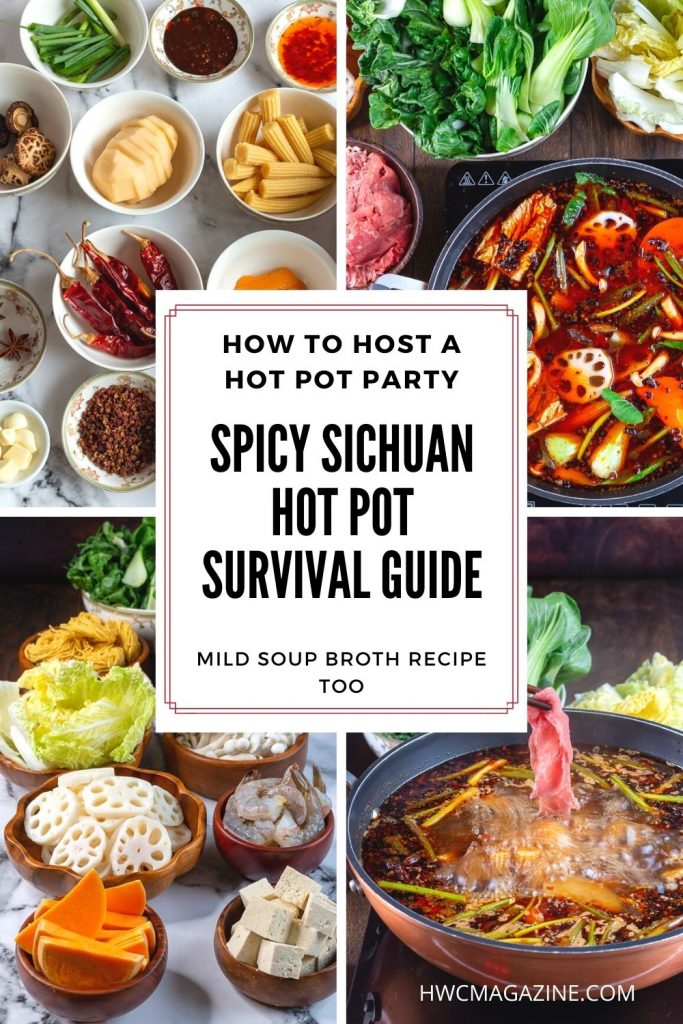
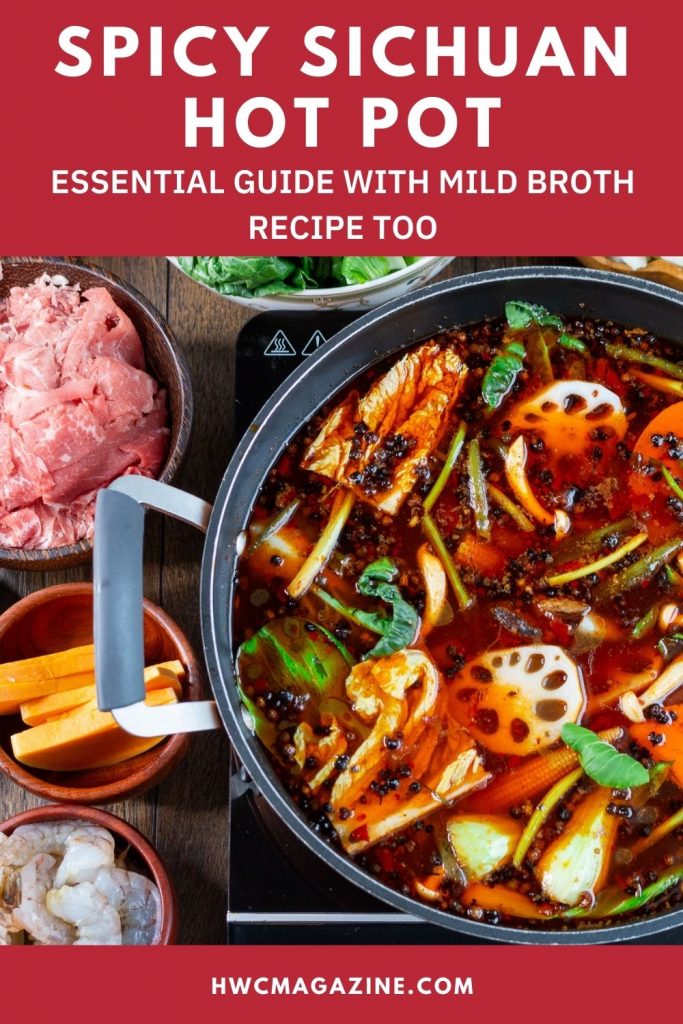
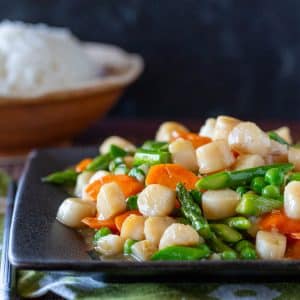
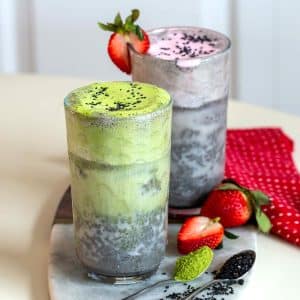
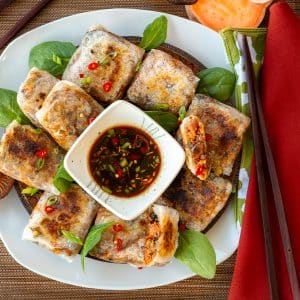


filingawaycupcakes says
This is amazing! I am so impressed with both your knowledge on the subject and your cooking!
Healthy World Cuisine says
Thank you. I am surrounded by smart beautiful international friends that teach me something new every day. I also love recreating things I try in a restaurant. Do you try to do this? I absolutely love the yummy tomato based hot pot broth I tried in Causeway Bay. I'm still working on getting the recipe for this broth so I can share with you. More taste testing is required. Take Care, BAM
filingawaycupcakes says
I definitely try to do that! I get ideas from restaurants all the time, but not usually this in depth of ideas lol
Taryn at Have Kitchen, Will Feed says
Just had my first shabushabu - thanks for the recipes. It's one of my new favorites!
Healthy World Cuisine says
Glad to hear Taryn. I hope you are doing well. I am on my way over to your website now... BAM
andylmoore says
Superb! I have always wanted to do a hotpot, especially the spicy one.
Now I know how. Thank you!
Healthy World Cuisine says
Thanks Andy, feel free to tone down the spices to your liking but from looking at your posts I think you like it spicy. This one is both spicy and numbing because of the Sichuan peppercorns.
andylmoore says
Sounds fab. Love Sichuan pepper. Need to get myself a little gas burner.
bitsandbreadcrumbs says
What a great idea...I'd never thought of doing a hot pot at home...only had them in restaurants. This is a great use for a crock pot and seems like a fun and tasty idea for a weekend dinner adventure. Great post!
Healthy World Cuisine says
Crack out the crock pot... This is a fun and easy meal for family and friends. After all you don't have to cook, your guests do. Take care, BAM
Sydney Jones says
This looks so yummy! I love hot and spicy, I can't wait to try this 🙂
Healthy World Cuisine says
Dear Sydney, thanks for stopping by my website so I could find yours. Tonight I am going to make your mojito but after acupuncture class I might need something a little stronger than a virgin mojito . BAM
Charles says
I love hot pot! The base of your spicy hot pot looks especially amazing, although also especially spicy! Every time I go to the Japanese supermarket in Paris I'm always sure to pick up enoki mushrooms so I can have a nice hotpot myself! Looks like you had a great meal! 🙂
Healthy World Cuisine says
Enoki mushrooms are the best. Feel free to lower down the spice and heat level of hot pot broth to suit your liking. My second mild broth is very flavorful and has ingredients that you can get in most countries. Here in Hong Hong they have hot pots that have 2 sections one side for la (spicy) and other side bu la (not spicy). Have a great day Charles. BAM
Joanne says
Wow, I wish I were sitting around that table. Looks incredible!
Healthy World Cuisine says
Anytime Joanne, there is always an extra spot at the table. Take care, Bam
thecompletecookbook says
Very impressive!
🙂 Mandy
Healthy World Cuisine says
Thanks Mandy
Zoe @ Pantry and Fridge says
This looks wonderful and very warming 🙂 I would love to give this a try. It's been chilly here and am past my usual soup day. I love your photos - another wonderful post. 🙂
Healthy World Cuisine says
Thanks Zoe. This hot pot will definitely heat you up from the inside out. I am becoming a complete wimp about cold now that I live in Asia. I had 3 layers of clothes on and it was 14 degrees Celsius today. Take care, Bam
Choc Chip Uru says
This hot pot is definitely much better than the one I ate at camp 😛
So much flavour spice and everything nice!
Cheers
Choc Chip Uru
Healthy World Cuisine says
Thanks Choc Chip Uru.
Dawn says
Wow, this was quite an undertaking, nice job!!
Healthy World Cuisine says
Thanks Dawn. Don't be overwhelmed by the steps as actually takes less than an hour to prepare, Maybe even 45 minutes you can get everything washed, cut and prepped and ready to go. BAM
Just A Smidgen says
I've had Shabu Shabu before.. your recipe looks so much more enticing than what I had (in a restaurant).. I love the two flavor choice and would definitely try the hot and spicy one! I didn't understand why it was broth and not oil (as in a fondue) and now it makes so much more sense with your historical background. I think this is so healthy as well! xo Smidge
Healthy World Cuisine says
Japanese Shabu Shabu is also very nice. I used to make that all the time when we lived in Yokohama- Shabu Shabu has a different broth, different dipping sauces and some different vegetables. (I might have to post that one on Healthy World Cuisine some time soon) Thanks Smidge.
Kathleen Richardson says
Aw, cute little (meat) hearts. Soup/stew is certainly universal, isn't it.
Healthy World Cuisine says
Thanks Kathleen! You are the first one to notice my little meat hearts. I think you are right. I can't think of a country that does not have some type of soup or stew but Asia is the place for hot pots.
Anonymous says
Nose is still running
Healthy World Cuisine says
Perfect! It was the Sichuan peppers and peppercorns that gets your sinuses running. Next time should we reduce the heat?
ceciliag says
This is a fantastic post, everything laid out so we can see what's what. I had better rummage about for my old helmet and see about making something like this though i will be never be able to find all these gorgeous exotic ingredients .. I shall be making my own spice mixes as per your instructions, that was a great addition.. c
Healthy World Cuisine says
Thanks Cecilia. My second mild broth recipe you should be able get all the ingredients no matter which country you live in. The beauty of this dish is your can customize it and use the ingredients that are in season and are local. Take care, BAM